Reviews
Wes Craven
USA, 1996
Credits
Review by Victoria Large
Posted on 03 October 2010
Source Dimension DVD
Related articles
The 90s Slasher Revival
I Know What You Did Last Summer
Halloween H20: Twenty Years Later
I Still Know What You Did Last Summer
Categories 31 Days of Horror VII
For much of the nineties, the horror genre felt exhausted. Save for the occasional glimmer of hope (such as Wes Craven’s New Nightmare in 1994) the slasher boom of the eighties had largely sputtered into cultural irrelevance, dwindling profits, and some really terrible movies. But then came 1996’s Scream, a sleeper hit that saw screenwriter Kevin Williamson testing out a new strategy: creating a teen slasher movie about the teens who grew up with slasher movies in their VCRs. The film’s success spurred studios to start churning out more youth-skewing flicks in general, and more youth-skewering horror flicks in particular, many of them aping Scream’s metamovie bent, and a number of them flowing from Williamson’s own pen. Now, with nearly fifteen years separating us from Scream (and with the belated Scream 4 scheduled to open next year), it’s worth looking back at what nineties slasher movies said about us then, and what they have to say to us now. Every Sunday for the next four weeks, look for a new review of a film from the fleeting, achingly self-aware days of the nineties slasher revival.
Scream has become one of those movies. Like The Shining, or The Exorcist, or its most obvious, and most openly acknowledged, forebear, Halloween, Scream’s impact has been blunted a bit by how thoroughly the film has been absorbed into our collective unconscious. Now that Scream is a pop culture touchstone, its obsession with deconstructing the “rules” of its own genre, of allowing characters to voice their experiences as slasher movie consumers even as they become slasher movie victims themselves, feels more familiar than fresh. By the end of the nineties, almost every horror movie incorporated a few throwaway, Scream-style lines about dopey genre clichés coming true, and 2000 saw the release of the first installment of the Scary Movie franchise. A spoof of what was already a satire, Scary Movie and its increasingly bodily function-obsessed sequels may have helped audiences to forget that Scream had ever done something new.
And, in some ways, it hadn’t. Two years prior to helming Scream, Wes Craven wrote and directed Wes Craven’s New Nightmare, an exceptionally self-aware sequel to his 1984 classic A Nightmare on Elm Street. The underrated New Nightmare features Craven, plus Freddy Krueger actor Robert Englund and original Elm Street star Heather Lagenkamp, playing versions of themselves. The mechanics of moviemaking are a central feature of New Nightmare’s high concept plotting, and like Scream, it manages to wink at the camera while still effectively creeping us out. So Craven himself had already taken the genre apart from within before Scream hit, and he certainly wasn’t the first horror director to take a swipe at the industry that made him (as fans of Tobe Hooper’s Texas Chainsaw Massacre 2 will surely attest).
But then again, Scream did speak the language of horror fans - and critics - in a way that no mainstream horror film did before it. In 1992, Carol J. Clover’s book-length study Men, Women, and Chainsaws: Gender in the Modern Horror Film dared to take slasher flicks seriously, and did an impressive job identifying their patterns and parsing their meaning. In 1996, Scream screenwriter Kevin Williamson wrote as though he’d ingested Clover’s text and most of his video store’s horror section, and his characters spoke as though they’d done the same. Jamie Kennedy’s hyperactive video store geek Randy distills years of diligent slasher study when he lays out the rules of surviving a horror film for us:
- You can never have sex.
- You can never drink or do drugs.
- Never ever under any circumstances say, “I’ll be right back.”
Those first two rules say it all: horror villains are monstrous parental stand-ins, brutally punishing young people - and especially young women - for their perceived misdeeds, sexual and otherwise. This stuff is lurking beneath the surface of every good (and bad) Halloween knockoff worth its Karo syrup, but with Scream, Williamson forcibly dragged his genre’s subtext into the text itself, and allowed his characters to audibly interrogate it—and then willfully revise it. (And perhaps now it’s confession time: for all of my admiration for Clover’s work, it was Williamson’s characters who I heard most of this genre analysis from first. I very much doubt that I’m alone.)
There’s an anonymity to your average Friday the 13th or Halloween sequel, owing both to their hulking, silent, and superhuman masked killers and to the sense-dulling sameness of the killers’ victims, usually thinly drawn stereotypes whose true virtue is their disposability. But Scream, a film that closes with a Rocky Horror-style “curtain call” end credits sequence (one that feels, both curiously and rather niftily, like an act of resurrection), makes for a contrary slasher film because its characters are so key to its appeal. One of the most unconventional aspects of Scream is the fact that we don’t really want to see any of these people dead; most horror screenplays seem to operate on the idea that what audiences really want is to meet some boring, obnoxious people and see them gruesomely dispatched, but Williamson has created some funny and sympathetic people here, even though we realize that at least one them is probably a psychopath.
The young cast members do a fine job and seem to be having a blast with Williamson’s dialogue, as well as the chance to be suspects in an engagingly twisty murder mystery. Consider an early scene set on the high school campus, in which Kennedy’s Randy exchanges jibes with Skeet Ulrich as the brooding Billy Loomis and an appropriately manic Matthew Lillard as class clown Stu Marker. The actors go toe to toe here, seemingly vying to see who can behave the most suspiciously in a single scene. (It’s doubtful, however, that any of the younger actors had more fun playing red herring than senior cast member Henry Winkler, whose Principal Himbry fabulously spits, “Your entire havoc-inducing, thieving, whoring generation disgusts me!” at a pair of delinquent students.)
Of course, Williamson’s nineties horror output has a notably high ratio of decent roles for women. Neve Campbell’s Sidney, the film’s requisite virginal, androgynously-named Last Girl, gets to be just as cynical and smart-mouthed as her peers. (And - spoiler alert - Williamson also allows her to get away with having sex after all.) While the boys slavishly recite those genre rules again and again, it’s Sidney who narrows her eyes and suggests a script rewrite. She finds an able sparring partner in Courtney Cox’s comically overstepping journalist Gail Weathers, and even Rose McGowan - the busty, blonde best friend - gets to have a brain and a few good lines.
But none of the above would matter much if Scream didn’t hold its own as a thriller. Happily, Craven gives us some gripping horror setpieces, starting with that iconic opening sequence: Drew Barrymore, her hair in a blonde bob, makes the mistake of answering the phone. “Do you like scary movies?” asks voice actor Roger Jackson, and it escalates from there, the rising tension echoed by a batch of Jiffy Pop that finally burns. (Barrymore is one of the film’s most famous faces, and her early exit in Scream feels like a calculated nod to Janet Leigh and Psycho. I can think of no better way to kick off a wave of history-steeped, self-referential splatter flicks than that.) The creepy caller conceit may be a lift from When a Stranger Calls, but Craven and Williamson make such dynamic use of telecommunications-based terror here that one has no choice but to let that bit of shoplifting slide.
The film’s final act still holds up extraordinarily well. Craven keeps the pacing taut even as Williamson makes his revision project especially blatant—Halloween plays on TV for most final scenes, quite literally reverberating through the action of Scream. We hear Jamie Lee Curtis shrieking while David Arquette’s skittish and terribly endearing young police deputy, Dewey Riley, searches for the killer. And as Curtis cowers in the closet, with Michael Myers bearing down on her, on TV, we see Sidney try something other than running and hiding. There may be no better example of how Craven and Williamson get away with having their cake and eating it in Scream, getting all postmodern on us without sacrificing the chance to make a really rollicking slasher film.
And when the true identity of the masked murderer is finally revealed? There is something a little ordinary about the villain - and I’m not talking about the twist (which is actually quite artful) - but about the villain. Once the sleek, intimidating killer in a black cloak and white mask disappears, we’re left only with sad, deranged, and slightly bumbling teenagers. It’s a little incongruous, certainly intentional, and one of the elements that still makes Scream interesting. The film mines the killer’s identity for some of its sickest humor, as well as some unexpected, and twisted, touches of pathos. Upon my most recent viewing, it was this that stuck out to me most - the way that Craven, a reluctant horror director by 1996 who would later direct Scream 3 on the condition that he could also direct the PG-rated drama Music of the Heart - unsettles us by reminding us that his characters are human.
In the past decade, Scream suffered a kind of delayed backlash, decried mainly for the string of less-than-inspired imitators that it spawned. Over the last ten years or so, horror directors like Eli Roth and Rob Zombie positioned their films as throwbacks to seventies grindhouse flicks, actively sidestepping the legacy of Scream. Meanwhile, new strains of horror film developed and then multiplied fast in the noughties as the horror genre battled to keep up with, and capitalize on, the free-floating paranoia of a technology-saturated, politically divided populace that was accustomed to watching reports of torture on the six o’ clock news. In other words, Scream has become so 1996. But it remains both an important film and a very enjoyable one.
Look, I tend to agree with the common criticisms of the film: it is glib, awash in Clinton era irony, and too smart for its own good. I just don’t see those things as criticisms. Scream is a savvy film that invites its audience to be savvy, providing the cathartic release implied by its title with a heaping side of genre theory. So when I say that it’s chatty and too clever by half, I say so with deep affection and more than a little nostalgia.
More 31 Days of Horror VII
-

The Thin Blue Line
1988 -

The Ninth Configuration
1980 -
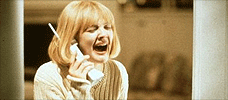
Scream
1996 -
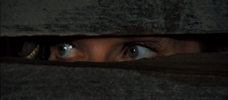
Dying Room Only
1973 -
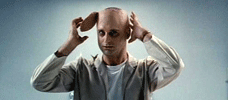
Brain Dead
1990 -

Zombi 2
1979 -
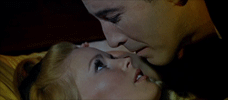
Dracula Has Risen from the Grave
1968 -

The Storyteller
1988-1989 -
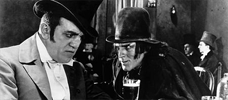
Dr. Jekyll and Mr. Hyde
1920 -
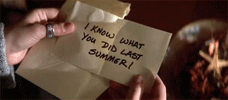
I Know What You Did Last Summer
1997 -
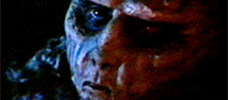
Don’t Be Afraid of the Dark
1973 -

Dark Age
1987 -
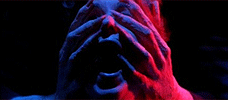
Inferno
1980 -
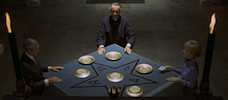
To the Devil a Daughter
UK / West Germany -

Trapped
1973 -
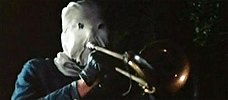
The Town that Dreaded Sundown
1976 -

Halloween H20: Twenty Years Later
1998 -

Killdozer
1973 -
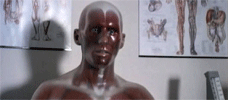
Pin
1989 -
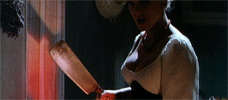
Frankenstein Created Woman
1967 -
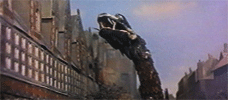
Reptilicus
1961 -
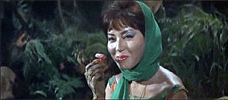
Matango
1963 -

I Still Know What You Did Last Summer
1998 -
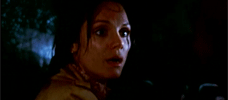
Night Terror
1977 -
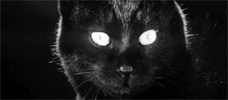
Kuroneko
1968 -

Demons
1985 -
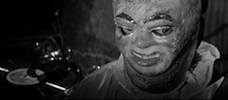
Paranoiac
1963 -

Let Me In
2010 -
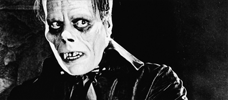
The Phantom of the Opera
1925
We don’t do comments anymore, but you may contact us here or find us on Twitter or Facebook.



